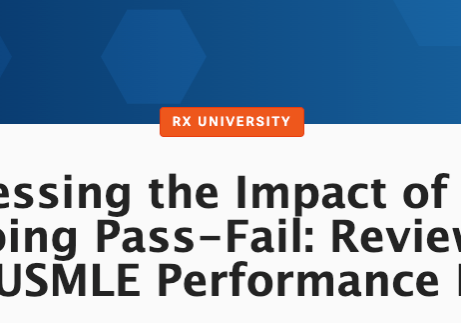This post is part of a series called “Med School Done Right,” which will look at not just succeeding in medical school in the narrow terms of “getting good grades,” but at shaping the kind of experiences you want to have during these (usually) four very important years of your life.
Now that you’ve jumped through all of the hoops associated with getting into medical school – taking premed classes, the MCAT, getting healthcare-related experience, collecting letters of recommendation, filling out that AMCAS application, and ultimately, filling out those secondaries and going to interviews – you’re now safely ensconced in med school. Whew!
But, now that you’ve made it, you’ve probably discovered that there are medical school versions of those pre-med hoops. Some are identical, like your GPA; others are similar, like the corollary between Step 1 and the MCAT; and others are completely different (here’s looking at you, Step 2 CS).
We here at First Aid/USMLERx spend a lot of time helping you maximize your likelihood of success in many of the measurable ways students are compared when competing for residency positions. However, we spend less time talking about some of the ‘soft metrics’ that are just as important to your overall competitiveness in any specialty. In fact, in some specialties, these requirements are even more important than the numbers we spend so much time and energy worrying about.
Perhaps the softest of these soft things is the “letter of recommendation (the LOR).” Because so much of the LOR process is opaque (you can’t look at your letters?!…that’s like saying you can’t look at your Step 1 score!), many students approach the process by relying much more on rumors and hearsay than on solid advice from people that know, namely those that write the letters and those that read the letters and make decisions based on them. In this series I’m going to break down some crucial information about LORs and cover:
- The differences between the pre-med letter & the medical school letter
- How I got each of my own letters of recommendation
- What residency program directors say makes a good letter (and how well I did or didn’t do after following their advice)
- What frequent letter writers say will increase their odds of saying ‘yes’ to a request for a letter of recommendation
But before I start in on any of these topics, I want to share one personal principle I followed in choosing whom to ask to write my letters:
Only ask someone for a letter that you yourself would proud to write a letter of recommendation for.
I’m not talking about people that you know are smart or that you can tell are productive. If you couldn’t write a glowing letter of praise and recommendation for their promotion or an award of some kind because of the person they are, don’t expect them to be excited about the opportunity to get to do the same for you. This is not to say that they won’t do that, since they obviously know these are expected and they have plenty of experience doing them. And, this mindset is of course unnecessary for meeting the quota for your ERAS application. Just for my own peace of mind and sense of authenticity, I wanted people that I was proud to have represent me write my letters – not just because they had a fancy title or were particularly eloquent, but because I deeply respected them and admired them as clinicians AND human beings.
Stay tuned for more details and advice from the experts…
Want to read more posts about hos to do med school “right?” Check out Luke’s article series here, or read the next article in the series, How I Got My Letters.





I truly appreciate this post. I have been looking all over for this! Thank goodness I found it on Bing. You have made my day! Thx again